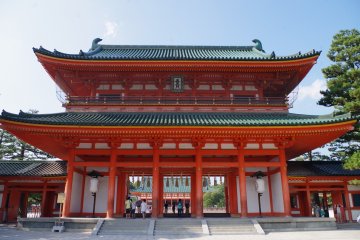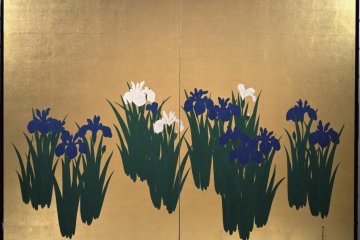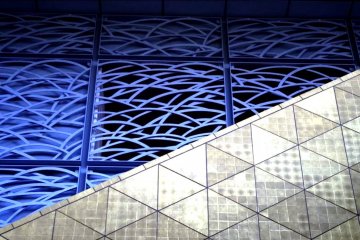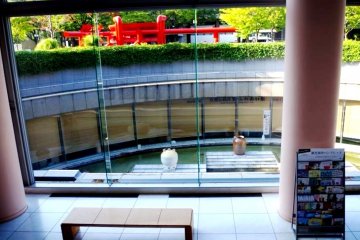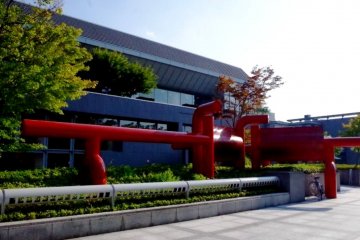Many visitors to Kyoto make a bee line to see the big three monuments, Nijo Castle, Kiyomizu Temple and the Golden Pavilion, or Kinkakuji. However, if you only see these monuments, you are only scratching the surface, for Kyoto, like an onion, is filled with thousands of years of culture that is waiting to be unveiled. At the same time, it may seem daunting when faced such history.
The Kyoto Museum of Traditional Crafts, on the other hand can offer you a shortcut into traditional culture. It is located at the lower ground floor of Miyako Messe building, which is a 5-minute walk from the Heian Shrine in the heart of Okazaki. The modern architectural design is infused with Japanese elements, such as the fire red outdoor sculpture which takes its inspiration from the red of the Shrine gates, or torii.
The museum aims to promote a whole range of traditional Japanese crafts from Nishijin-ori woven textiles to Kyoto style dolls (Kyo-Ningyo). It has regular shows and workshops, such as traditional dance by Maiko apprentice Geishas as well as demonstrations of handcraft work by old masters textile dying and bamboo ware making. It is amazing the variety of home wares that can be made from bamboo. Kyoto is known for making even everyday items beautiful, and whether you are interested in flower vases, baskets, tableware, lamps or even bookmarks, there is something that can be made with bamboo. This city is also known for its Kiyomizu-yaki ceramics, whose history dates before the foundation of the capital in the fifth century.
On the other hand, if you feel like making an unique souvenir, you can join the handicraft classes on Surigata-Yuzen (Kyoto’s stencil-dyeing). It takes just 45 minutes to make your own original work, and you can choose from a variety of traditional stencils, such as Plum or Cherry blossoms, Camellia flowers, Hotoru Fireflies, or if you wish to remember your days in Kyoto, iconic places like the fire festival at Daimonji mountain, or the famous Gion Festival. These stenciling workshops are available on weekends and public holidays, from 9:30 in the morning to 17:00 in the afternoon. It only costs 600 yen. In the weekdays, they only open the workshops for group visitors with two weeks reservation.
The exhibitions are all free of charge and the museum is open every day from 9:00 to 17:00 except the New Year holidays (29 December - 3 January) and 2 days in the middle of August. From JR Kyoto Station, take the city bus route 5 or 100 to get to the museum.



